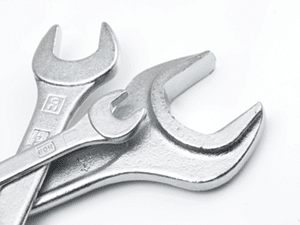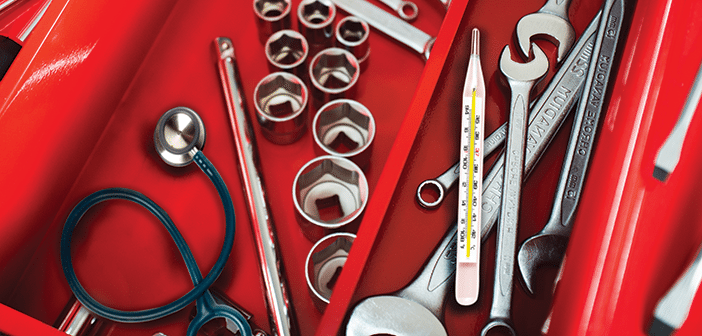Checking Your Service Department’s Health
By John Fairchild
Owners and general managers need to feel the pulse of the Service Department constantly. Service retail metrics can be misleading and frankly overwhelming. Knowing what to measure is the first step, but knowing what to do with all those numbers to deliver positive change, isn’t always crystal clear. Let’s explore key service department retail measures and why to watch them.
When used properly, relative metrics provide laser-sharp insights into a dealership, showing areas of strength and weakness in sharp contrast. Many dealers and GMs look to the service department as a financial buffer but don’t thoroughly understand the key drivers of success.
When bearing in mind metrics, don’t get flabbergasted; not all the measurements need to be taken instantaneously and not all modifications to process must be implemented at once. Small incremental steps well thought out are much healthier than making a few hasty jumps.
The following are some service department retail measures dealers should consider and ways metrics can be used to analyze your retail service business and implement continuing progressive changes. By no means is this a comprehensive list, but these metrics are worthy beginning points to see how proficiently and successfully the service department is running.
There is no Magical Figure
Dealership consultants and factory representatives alike love benchmarks. But, statistical criteria can be crippling; what’s important is continuous improvement, Dealers shouldn’t use service metrics to aim for a generic benchmark. Incremental improvement over historical performance is a great place to start.
Also they must be examined regularly, some preferably daily, and measured month-to-date. Too often, measurements are taken infrequently and if they look good, they’re not revisited on a regular basis. This is a huge mistake.
CP Repair Orders Written: Looking at the number of tickets an advisor should be able to write in a day and as a department as a whole, are we slower or busier than we need to be for the staff we employ?
- 15 tickets a day per Advisor is a good place to be any, more may prevent cultivating quality transactions.
- Historical context versus the same month in the prior year and the previous month.
- Measure tickets written month to date divided by the number of days worked times the working days in the month to obtain your rate of travel.
- CP RO’s written speaks to your customer retention. Are your car counts climbing, stagnant or falling?
 Measure Your Service Advisors Salesmanship
Measure Your Service Advisors Salesmanship
Service Advisors are a critical point of interaction between your dealership and your customer, nevertheless they often don’t get the kind of training a salesperson gets. Service Advisors, however, are actually a make-it-or-break-it employee for the service department. Are they upselling to your customers or just handing out the repair order (RO) and taking orders? Measuring a service writer’s efficiency and effectiveness is critical; what you find may enable you to increase sales dramatically.
- Customer pay Labor Dollars per customer. Two measurements diagnose performance here.
- Effective Labor Rate (Average labor charge per hour flagged) TIMES the
- Hours sold per Repair Order equals the Labor Dollars per customer.
- Customer pay Parts Dollars per customer. A baseline of 1:1 Parts-to-Labor ratio is desirable in most scenarios with heavier parts sales attributed to selling Parts-heavy jobs like Tires, Batteries and Filters.
- Commodities penetration. How many key Competitive services are being sold per Repair Order? Maintenance commodities include Brakes, Tires, Wipers, Filters, Batteries and Fluid exchange services.
- Parts & Labor Gross Profit Percentage Retained. This is really how much money are we keeping from the transactions we have. Low percentages may indicate excessive discounting and/or poor upsell penetration.
- One Line Repair Orders – Another useful metric when gauging a service writer’s efficiency and salesmanship is how many ROs have only one item on them. A high incidence of one line RO’s indicates a need for training, or worse, apathy to asking for the business.
Again, these measurements must be taken often and consistently to provide a definitive snapshot of efficiency.
Assessing Your Technician Condition
The next area of attention is the tangible production in your shop. The productivity and efficiency of your Technical staff is an area that tells a lot about the health of the overall department. Here are the things to be attentive to regarding techs.
- Technician Productivity – Defined by the number of flagged hours versus time on the clock. So if a Technician is at work 8 hours and flags 8 hours, his productivity is 100%. Be aware that in a lot of shops there is not a religious accounting of “clock” hours recorded in the DMS system. In these cases, for a consistent measuring point, divide the number of flagged hours by the general time an employee is clocked on the job…usually 8 hours.
- Gross Profit Percentage per Tech – This measure tells us how profitable a technician is and the shop as a whole. It may indicate if the tech is over or underqualified for the job being worked on. If you’re “A” level tech is performing ultra-competitive services the GP% will be very low.
Measuring From A Customer’s Viewpoint
When considering service department retail metrics, managers are in jeopardy of becoming so internally absorbed that they overlook that what’s truly essential, how they measure up from the customers’ perspective. There are so many critical measurements internal to our operations, but the key measurement external to us is customer satisfaction. Was a customer satisfied? Will he return for more service work or promote our department?
- Customer Satisfaction Scores – There is a huge amount of credence given by the manufacturer here so it’s likely that you are already intimately familiar with your standing here. Be careful that you are not underrating your people based on “good” scores. A good score is a ZERO in the eyes of the factory but usually just means the customer was not informed as to how important the top box answer is to the Dealership or Advisor involved.
- Customer Retention Metrics – A critical metric to evaluate is how many of your customers are going elsewhere for service. Are your car counts declining? Is there a large number of VIN numbers that have not been back in over 12 months?
Enduring Analysis Paralysis
There are hundreds of measurements of every aspect of your service department related to retail health and viability. Instead of feeling enlightened, you may be ready to pound your head against the Service Desk. You are suffering from information overload. Now what? You might have bitten off more than you can chew, but you can work your way out of the mess. First of all, keep it simple then add measurements gradually. These solid core retail measurements we have discussed above are an excellent starting point and the basis of ongoing success.
Armed with this retail metrics information, General Managers and Dealers can subjectively review where their dealership ranks and feel in step with the state of affairs in the Service Department at any moment.








